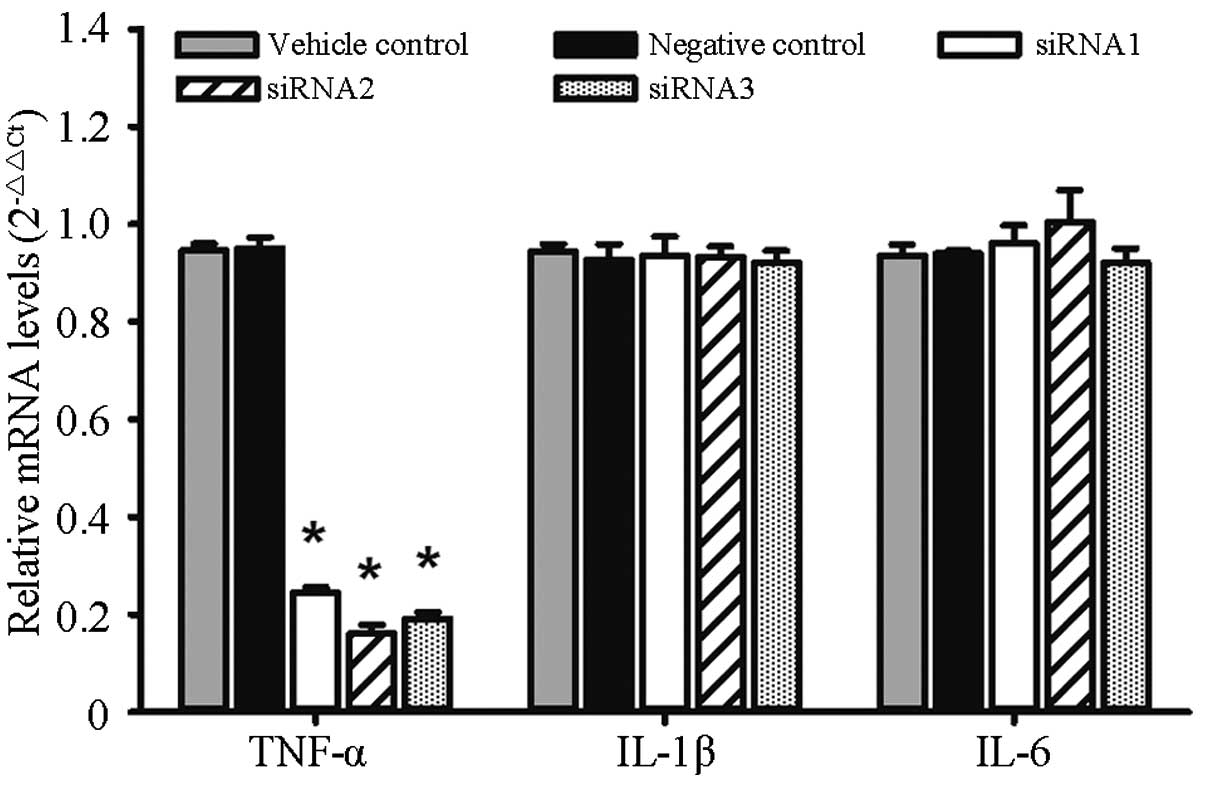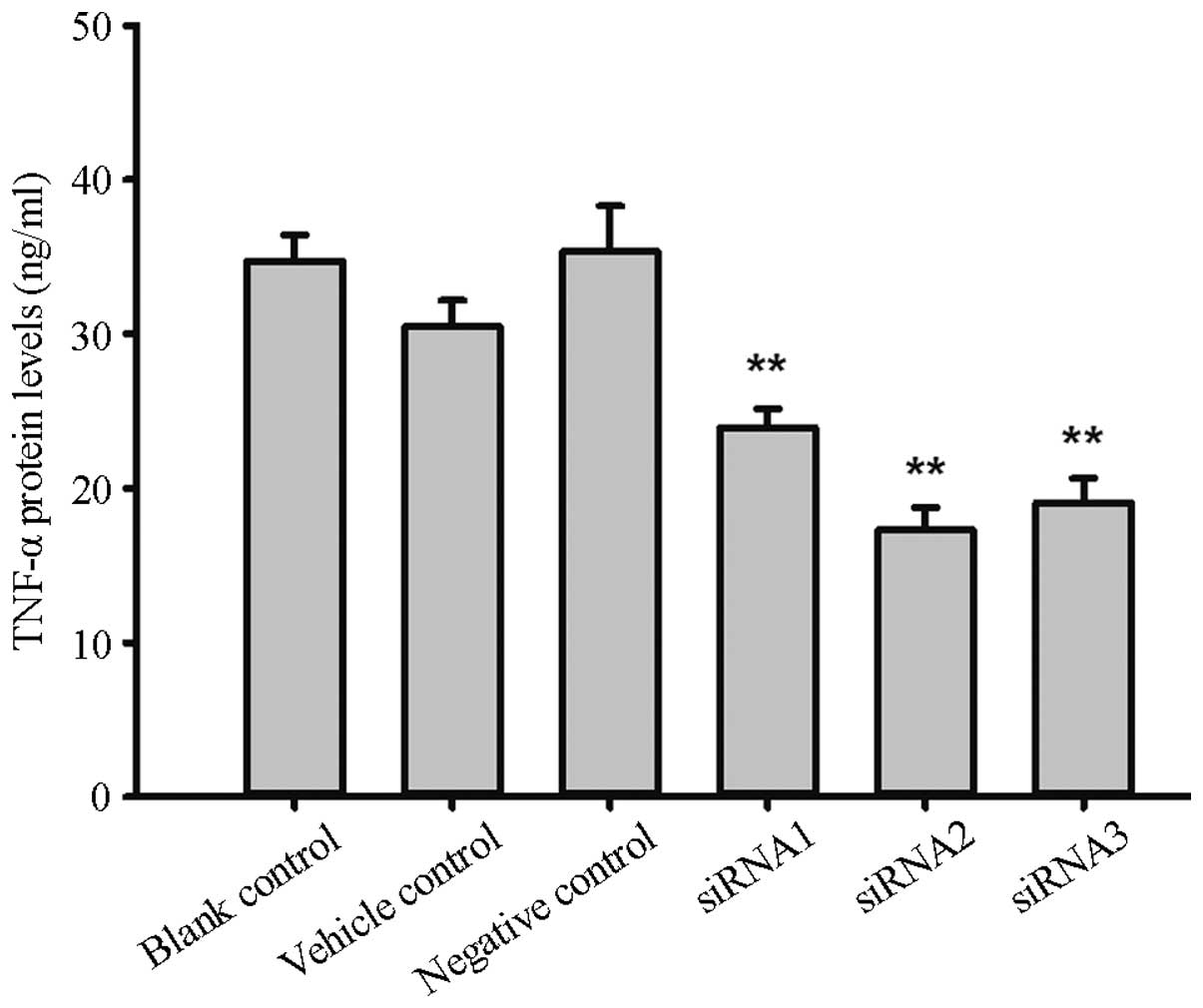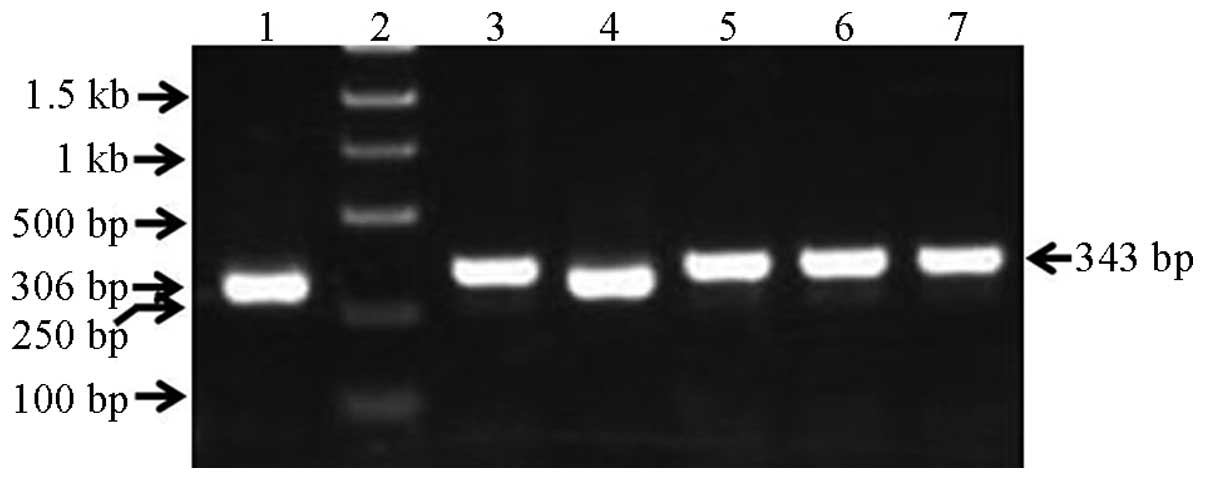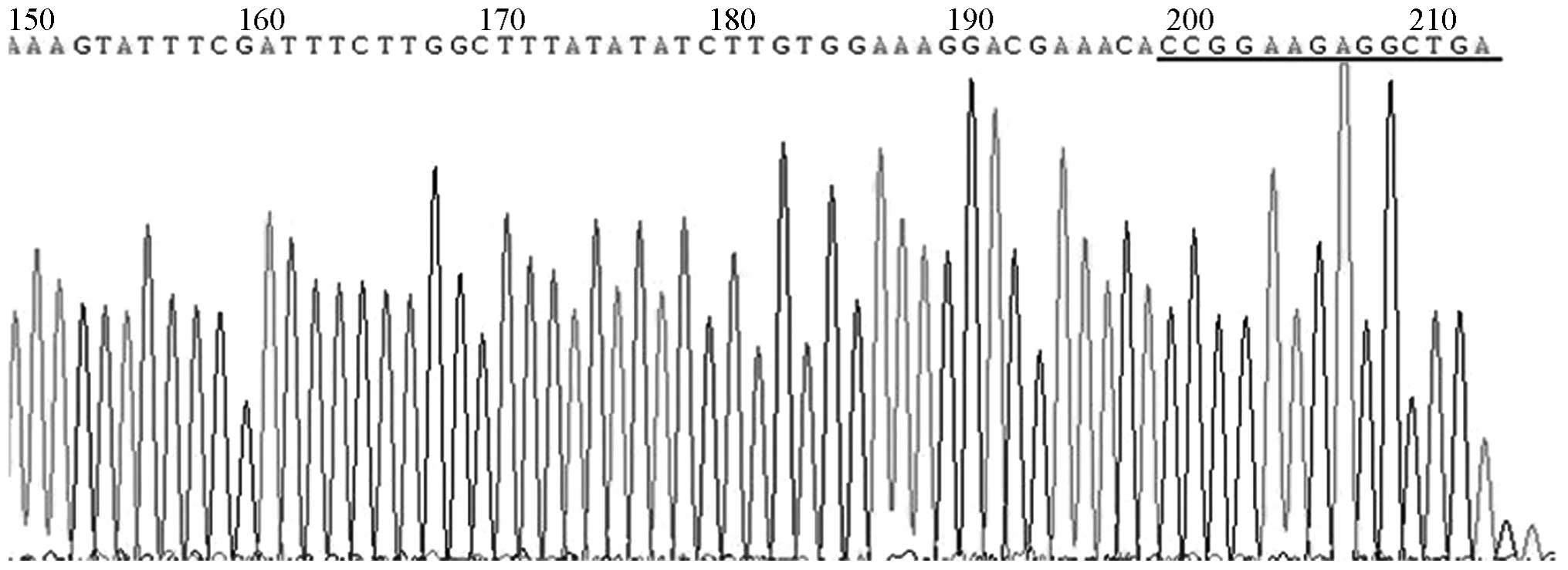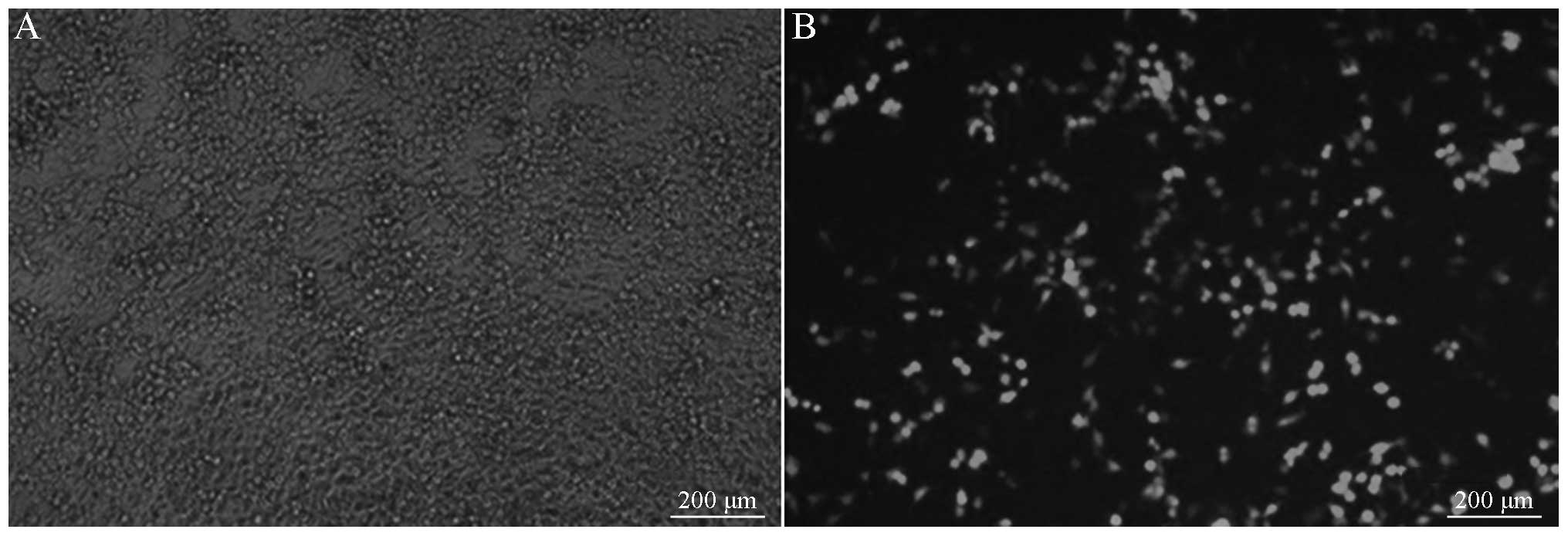|
1
|
Chen SY, Shiau AL, Li YT, Lin YS, Lee CH,
Wu CL and Wang CR: Suppression of collagen-induced arthritis by
intra-articular lentiviral vector-mediated delivery of Toll-like
receptor 7 short hairpin RNA gene. Gene Ther. 19:752–760. 2012.
View Article : Google Scholar : PubMed/NCBI
|
|
2
|
Sakuma T, Barry MA and Ikeda Y: Lentiviral
vectors: Basic to translational. Biochem J. 443:603–618. 2012.
View Article : Google Scholar : PubMed/NCBI
|
|
3
|
Gouze E, Pawliuk R, Pilapil C, Gouze JN,
Fleet C, Palmer GD, Evans CH, Leboulch P and Ghivizzani SC: In vivo
gene delivery to synovium by lentiviral vectors. Mol Ther.
5:397–404. 2002. View Article : Google Scholar : PubMed/NCBI
|
|
4
|
Lewis PF and Emerman M: Passage through
mitosis is required for oncoretroviruses but not for the human
immunodeficiency virus. J Virol. 68:510–516. 1994.PubMed/NCBI
|
|
5
|
Naldini L, Blömer U, Gallay P, Ory D,
Mulligan R, Gage FH, Verma IM and Trono D: In vivo gene delivery
and stable transduction of nondividing cells by a lentiviral
vector. Science. 272:263–267. 1996. View Article : Google Scholar : PubMed/NCBI
|
|
6
|
Wilson AA, Kwok LW, Porter EL, Payne JG,
McElroy GS, Ohle SJ, Greenhill SR, Blahna MT, Yamamoto K, Jean JC,
et al: Lentiviral delivery of RNAi for in vivo lineage-specific
modulation of gene expression in mouse lung macrophages. Mol Ther.
21:825–833. 2013. View Article : Google Scholar : PubMed/NCBI
|
|
7
|
Wollebo HS, Woldemichaele B and White MK:
Lentiviral transduction of neuronal cells. Methods Mol Biol.
1078:141–146. 2013. View Article : Google Scholar : PubMed/NCBI
|
|
8
|
Houbracken I, Baeyens L, Ravassard P,
Heimberg H and Bouwens L: Gene delivery to pancreatic exocrine
cells in vivo and in vitro. BMC Biotechnol. 12:742012. View Article : Google Scholar : PubMed/NCBI
|
|
9
|
Moelants EA, Mortier A, Van Damme J and
Proost P: Regulation of TNF-α with a focus on rheumatoid arthritis.
Immunol Cell Biol. 91:393–401. 2013. View Article : Google Scholar : PubMed/NCBI
|
|
10
|
Elbashir SM, Harborth J, Lendeckel W,
Yalcin A, Weber K and Tuschl T: Duplexes of 21-nucleotide RNAs
mediate RNA interference in cultured mammalian cells. Nature.
411:494–498. 2001. View
Article : Google Scholar : PubMed/NCBI
|
|
11
|
Svoboda P: Off-targeting and other
non-specific effects of RNAi experiments in mammalian cells. Curr
Opin Mol Ther. 9:248–257. 2007.PubMed/NCBI
|
|
12
|
Lin X, Yu Y, Zhao H, Zhang Y, Manela J and
Tonetti DA: Overexpression of PKCalpha is required to impart
estradiol inhibition and tamoxifen-resistance in a T47D human
breast cancer tumor model. Carcinogenesis. 27:1538–1546. 2006.
View Article : Google Scholar : PubMed/NCBI
|
|
13
|
Qiu Z, Huang C, Sun J, Qiu W, Zhang J, Li
H, Jiang T, Huang K and Cao J: RNA interference-mediated signal
transducers and activators of transcription 3 gene silencing
inhibits invasion and metastasis of human pancreatic cancer cells.
Cancer Sci. 98:1099–1106. 2007. View Article : Google Scholar : PubMed/NCBI
|
|
14
|
Ai Z, Yin L, Zhou X, Zhu Y, Zhu D, Yu Y
and Feng Y: Inhibition of survivin reduces cell proliferation and
induces apoptosis in human endometrial cancer. Cancer. 107:746–756.
2006. View Article : Google Scholar : PubMed/NCBI
|
|
15
|
Khoury M, Louis-Plence P, Escriou V, Noel
D, Largeau C, Cantos C, Scherman D, Jorgensen C and Apparailly F:
Efficient new cationic liposome formulation for systemic delivery
of small interfering RNA silencing tumor necrosis factor alpha in
experimental arthritis. Arthritis Rheum. 54:1867–1877. 2006.
View Article : Google Scholar : PubMed/NCBI
|
|
16
|
Zhu ZG, Jin H, Yu PJ, Tian YX, Zhang JJ
and Wu SG: Mollugin inhibits the inflammatory response in
lipopolysaccharide-stimulated RAW264.7 macrophages by blocking the
Janus kinase-signal transducers and activators of transcription
signaling pathway. Biol Pharm Bull. 36:399–406. 2013. View Article : Google Scholar : PubMed/NCBI
|
|
17
|
Qureshi AA, Guan XQ, Reis JC, Papasian CJ,
Jabre S, Morrison DC and Qureshi N: Inhibition of nitric oxide and
inflammatory cytokines in LPS-stimulated murine macrophages by
resveratrol, a potent proteasome inhibitor. Lipids Health Dis.
11:762012. View Article : Google Scholar : PubMed/NCBI
|
|
18
|
Kusumawati A, Commes T, Liautard JP and
Widada JS: Transfection of myelomonocytic cell lines: Cellular
response to a lipid-based reagent and electroporation. Anal
Biochem. 269:219–221. 1999. View Article : Google Scholar : PubMed/NCBI
|
|
19
|
Liao HS, Kodama T, Doi T, Emi M, Asaoka H,
Itakura H and Matsumoto A: Novel elements located at −504 to −399
bp of the promoter region regulated the expression of the human
macrophage scavenger receptor gene in murine macrophages. J Lipid
Res. 38:1433–1444. 1997.PubMed/NCBI
|
|
20
|
Wirtz S, Becker C, Blumberg R, Galle PR
and Neurath MF: Treatment of T cell-dependent experimental colitis
in SCID mice by local administration of an adenovirus expressing
IL-18 antisense mRNA. J Immunol. 168:411–420. 2002. View Article : Google Scholar : PubMed/NCBI
|
|
21
|
Lee JS, Hmama Z, Mui A and Reiner NE:
Stable gene silencing in human monocytic cell lines using
lentiviral-delivered small interference RNA. Silencing of the
p110alpha isoform of phosphoinositide 3-kinase reveals differential
regulation of adherence induced by
1alpha,25-dihydroxycholecalciferol and bacterial
lipopolysaccharide. J Biol Chem. 279:9379–9388. 2004. View Article : Google Scholar : PubMed/NCBI
|
|
22
|
Guo Y, Liu J, Li YH, Song TB, Wu J, Zheng
CX and Xue CF: Effect of vector-expressed shRNAs on hTERT
expression. World J Gastroenterol. 11:2912–2915. 2005. View Article : Google Scholar : PubMed/NCBI
|
|
23
|
McIntyre GJ and Fanning GC: Design and
cloning strategies for constructing shRNA expression vectors. BMC
Biotechnol. 6:12006. View Article : Google Scholar : PubMed/NCBI
|















